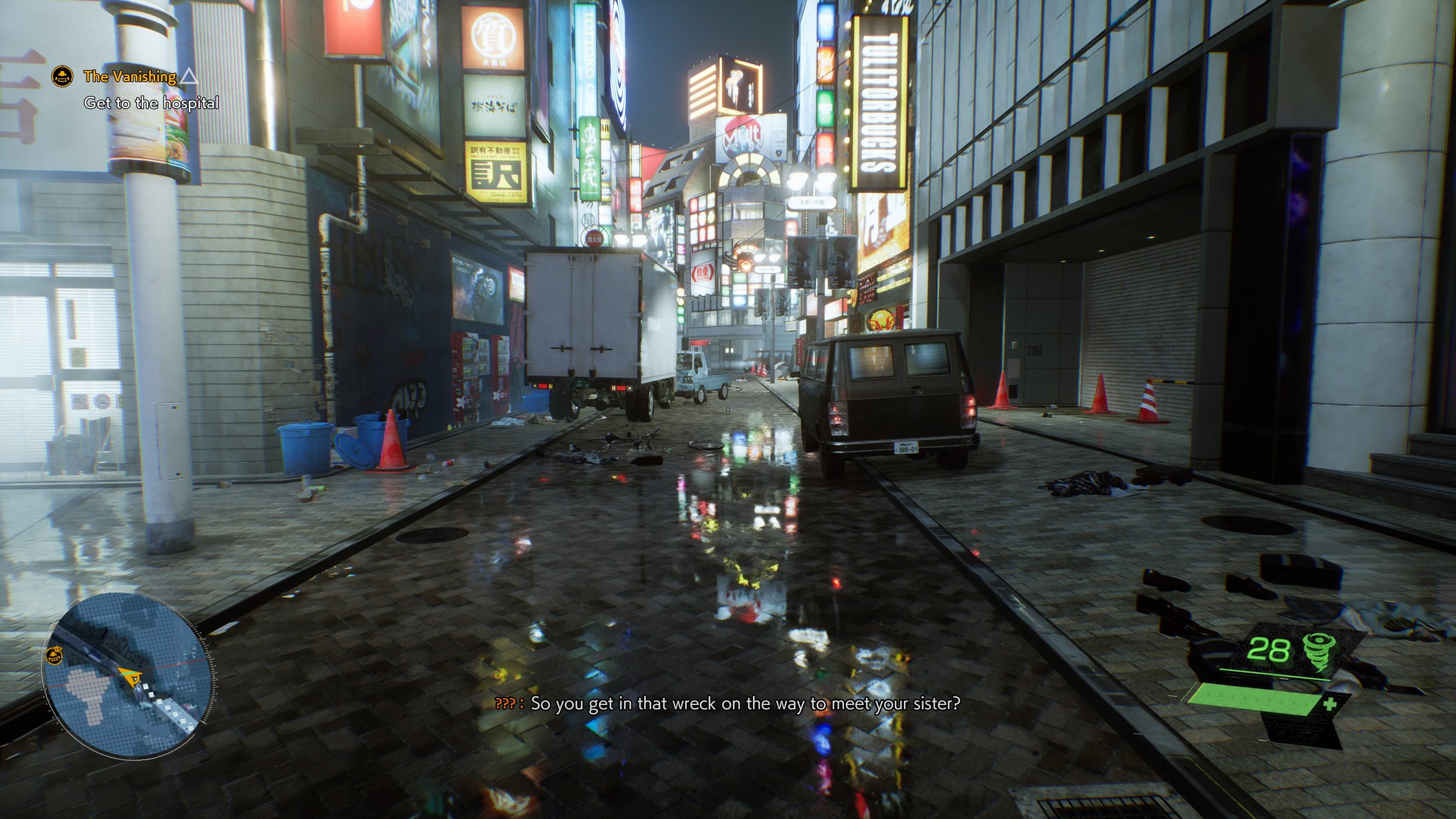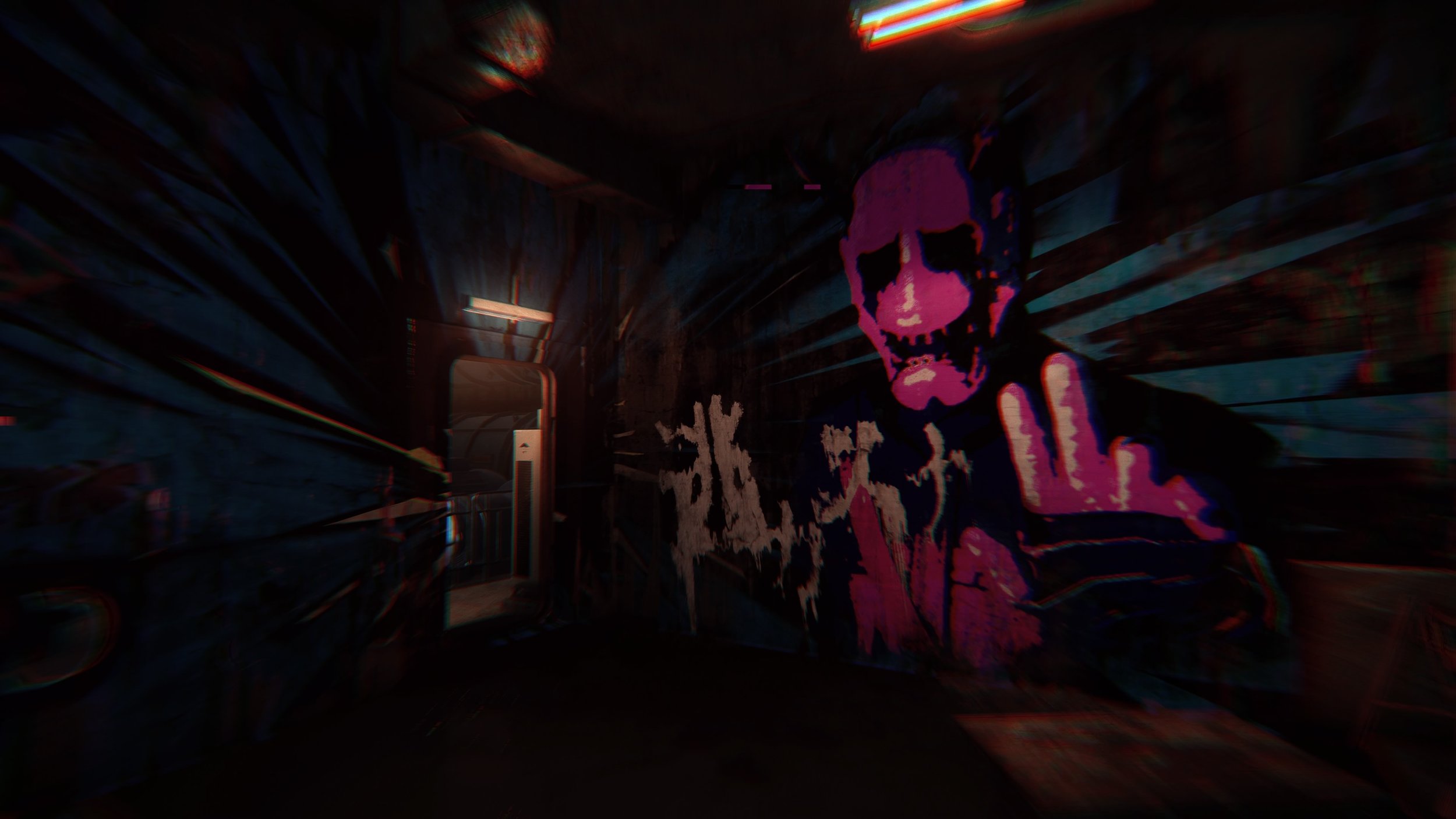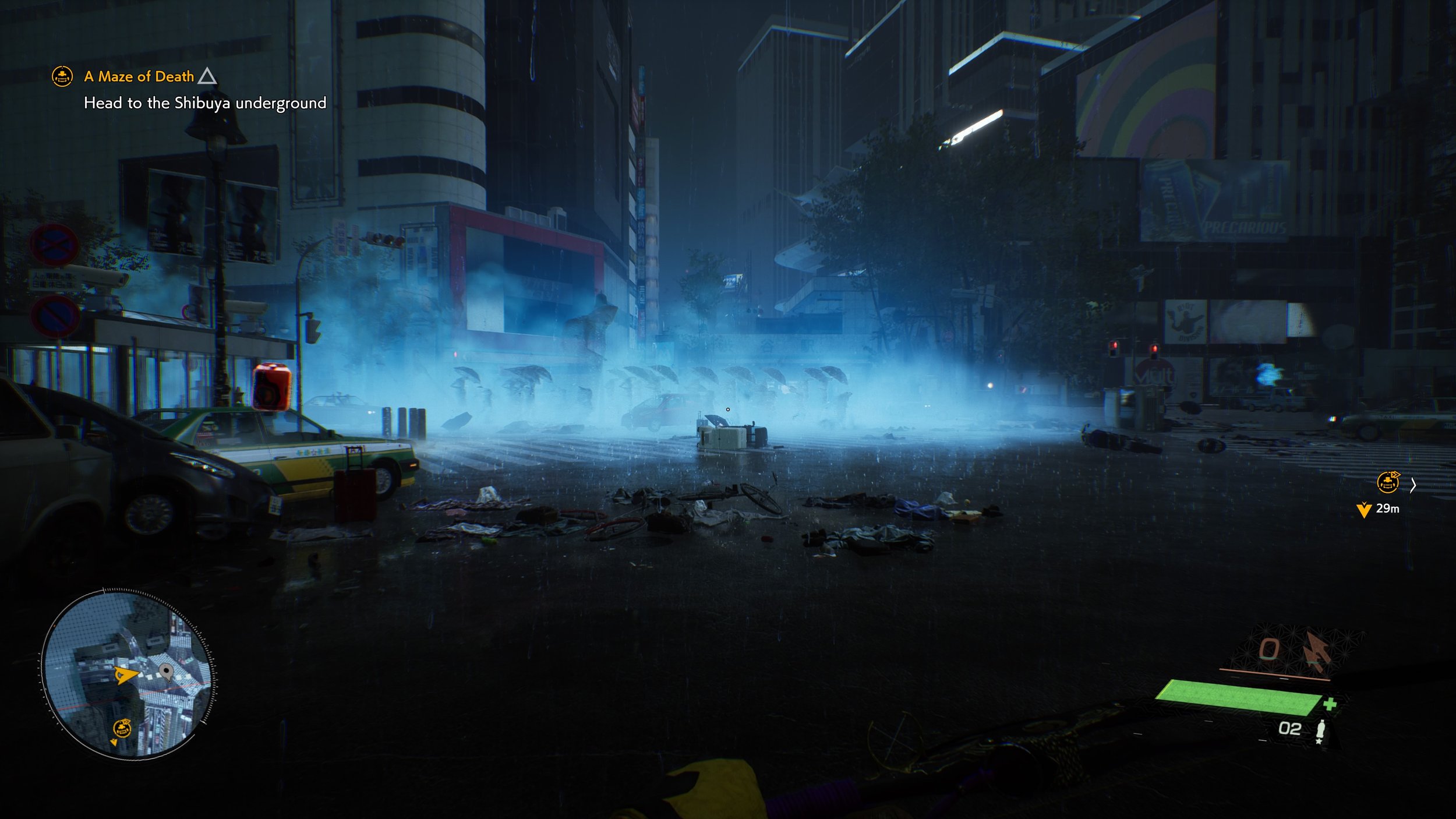Ghostwire Tokyo - Review

Shinji Mikami has obtained a lot of credits over the years, from his early work on Aladdin for Capcom, to creating the Resident Evil series, along with rebooting it with Resident Evil 4. When he started up a new studio, Tango Gameworks, many assumed that he would stick with horror games and for a while they did, but now we have Ghostwire Tokyo, which does have some spooks in it, but drops the mainline horror themes for something else entirely. Is this a welcome change in direction for the company, or should they have stuck with what they knew?
Ghostwire Tokyo tells the story of a number of people, some we meet in person, others are merely done via audio, but at its heart are three folks, the player character Akito, his spiritual advisor KK and the dastardly villain Hannya. The game kicks off with an accident, a car in flames and people lying on the street, while some folks are looking on, a spectre dives into the one of the victims of the accident, Akito. Turns out though he wasn’t as dead as the spirit believed and now KK and Akito have to share the space. While they were working things out, a large fog cloud rolled across a massive portion of Tokyo, enveloping all and any human it touches, vanishes. Determined to stop the man behind it KK and Akito first rush to the hospital where Akito’s sister is, in order to ensure she is ok, but upon the arrival, they find that Hannya is there and taking Mira away, though Akito attempts to stop him, Hannya and his team of minions escape, leaving Akito and KK to track them down.
Beyond the setup of the story, I won’t talk anything more about it, as discovering the tale is something that each player needs to do on their own. A lot of the story beats are provided as you complete the main missions, but the detail comes from logs, notes and other assorted pieces of intel that you can find scattered around the world. There is one issue with the story and that is Akito, he seems to bounce back and forth between ready and willing to help out and not wanting to get involved. The only reason I mention this, is down to the fact that there are times when he and KK are separated, story driven and sometimes due to combat and he always seems to change his mind. It is an issue, because for the main character to not be invested in the adventure, it is hard for the player to want to be as well. Thankfully it does play out well in the end, so if you are worried about that, don’t be.
Where the game shines though is in the gameplay, with it being locked to the first-person view, except when you are taking a selfie, everything is linked to that. Combat is done with hand movements, which were inspired by Kuji-kiri, think Naruto but with magic and while it can feel like a lot is going on at times, the game never misses a beat with that. I will get to the combat in a moment, but the game does offer an insane amount of things to do outside of it, from helping Nekomata, to helping restless spirits complete one final goal, before they pass on and that doesn’t dive into just exploring Shibuya. Once the humans are all gone, countless Yokai come out to play, from Kappa to Oni, they are all around Tokyo and while some can be a pain, others are just trying to survive the Visitors, the countless bad spirits that are now walking the streets. While some of these encounters can be slow to wade through, the result is important as it unlocks extra upgrade potential and you will want to collect at least a few of them. The other major thing to do is cleans the dozens of shrines around the city, not only does it provide you the chance to level up your beads, but it also clears the fog out of sections of the city, opening up more to explore, which continues the cycle of helping.
Helping out the restless spirits that are loitering around the city is also a good way to earn xp, but the best way is to save the spirits of the people that were impacted by the fog. Many games will claim to have a lot to collect, Ghostwire Tokyo has over 200,000 souls to save and as you do, you will earn money, but more importantly XP. With each level that you gain, you will be given points that you can use to upgrade Akito, either in his Ethereal Weaving, his movement options, or just general upgrades. Regardless of which skill you think you will want to focus on, there are skills spread across each group that you will want, for example I never put much stock in the gliding mechanic at the beginning, but in the later portion of the game, you couldn’t stop me from jump from roof to roof and fully upgrading that option takes the total glide time from 2 seconds up to 10, which is a lot. The money that you get from completing missions, but mostly from saving souls, can be used to buy food from the numerous conbini and vending machines around the city. If you don’t though, then worry not as there are countless bags of food, bottles of drink and even otherworldly meals that are littered all over.
Of course, that is all extra, the real fun in the game comes from the combat, when I previewed the game earlier in the year, I called it a First-Person Eternal Darkness and that is accurate to an extent, but it goes much deeper than that. At the outset you have just one Ethereal Weaving power, wind and it acts like a pistol, able to fire off a lot of shots in a rapid fashion and will be best used when there are a number of enemies in the area. The second power you get is water and it acts more like a shotgun, letting you hit a wide number of enemies, assuming you charge it up to its fullest potential, with the final one being fire. That one is your grenade, and once charged can decimate a large group of foes or deal significant damage to some of the more dangerous enemies. For those times though, that you are without KK or you want to be stealthy, you can break out the bow and arrow, letting you take out many enemies as silently as you can. Early on your bow will only be effective against the common enemies, but later on, if you level up the beads that you can wear, you can take down some of the more deadly foes with a single shot, though miss and you risk pissing them off.
This is where two of the most amazing things come into play for the game, first is that as Tokyo is a city that it surrounded by lights, they actually factor into the combat. When you start approaching enemies, if they should spot you or think they may have, you will get an indicator ring on the screen, much like a grenade icon from most shooters. However, in addition to that the lights in the area will fade from white to orange, indicating that someone sees you, and if you engage in combat, or they do, all the lights go red and stay that way until you are clear of the enemies around. It honestly took me hours to notice why the screen was going red when I entered combat, but once I realised that it was the lights, it just added another element to how immersive it all felt. The second way that combat is different from other games, is that you can opt to completely ignore enemies on the street, apart from story-based events that require you to take them down, those enemies on the street can be totally avoided. There was a time when I was without KK and there were countless enemies, one of which was a Kuchisake and they are a pain at the best of times. Thankfully, while I was attempting to find away around them, I discovered a ladder and was able to literally rise above the entire combat area and not have to fight a single enemy. Given how versatile the combat is, based on how you upgrade, or choose not to upgrade, there are going to be a lot of ways to play the game and while, multiple replays may not be up for everyone, a second go through, may appeal to many. Though given that after my 18+ hours with the game, I had only collected 45,000 souls, there is clearly a lot more left to do.
When it comes to the games presentation, there are some amazing things and some less than, but let us focus on the best first and that is that the game looks incredible, across the board. The characters both helpful and not, plus the world itself, all feel alive and given the lack of people that is saying something. As you wander around, you will see billboards advertising products, giant tv screens showing portions of the news or other programming and even the visitors, looking in store windows, all help ground the world as a real place, beyond the fact that it is real. One of the most famous intersections in the world is the Shibuya Crossing, I myself have walked across it and it is as crazy in person as you expect to be, to see that exact same location, devoid of people and filled with crashed vehicles, Visitors and a general eerie vibe, it just doesn’t feel right, but still does. There was even the overpass, that lets you walk from one part of Shibuya Station to another, it is honestly bizarre how well everything comes together, even when the parade of death comes marching through.
Beyond the world though, the game pays special attention to the lighting, beyond what they do with the combat, there are countless times when the amount of ambient lighting fades down to very little, making everything feel like its closing in. There are times when you enter confined locations and the lighting is used to great effect, to make you question what is being seen and even some encounters are telegraphed, by seeing shadows of enemies running across walls and the sides of trucks. Characters are wonderfully animated and while there isn’t a lot of time that we see Akito in full, when we do, there is a sense that he is connected to the events of the world, with how naturally he connects with it. There was a moment when I was walking through one of the subway stations and saw one of the salary man enemies standing there starring at one of the ticket machines, it was a weird sight, especially given that the enemy has not discernible face.
For all the good though, there is some bad, thought calling it bad might be a misnomer as things are still good for the most part. The game has three visual settings, at least on PlayStation 5, the first is for those who want raytracing enabled, which is what I did and with the detail from the lights, it looks incredible. In order to accommodate that, everything is locked to 30fps and while the game runs solid, I never noticed any issues with the performance around Akito, the game does have issues loading up elements in the distance, street signs, trees, cars and even building details would pop in quite often. To be fair, the only time these instances happened was when I was running around at street level, but when you are seeing perfectly composed settings, having elements appear is noticeable. The games second option is performance, it disables raytracing and ups the frames to 60 and while it looked smoother, there was still that same pop-in effect happening and somehow, it was occurring more than the other mode. The final option is one I can’t test, because it requires a tv that does 120fps, which mine does not.
On the sound side of things, there isn’t really anything to make note of, the music is great and the acting is just perfect and while the game does offer both Japanese and English voice work, I started with the Japanese and found myself preferring that to the English. The English is good, but it just felt more authentic to be playing a game that is set in Japan and features characters from Japan, to be speaking Japanese. One little interesting fact, all the actors for the English dub, at least for the Japanese characters, are actually Asian or Asian descendant, so that was nice. The games music blends traditional Japanese instruments like the shakuhachi, but also mixes in more modern instruments and blends them together, to create a soundtrack that can embrace the spooky when needed but ramp up the tempo for when the action breaks out.
I could say a lot more about Ghostwire Tokyo, from the many characters that you meet, to the story itself and even how often I would just walk down lanes and alleys attempting to see what I could. From the countless Visitors to fight, ghosts to help and the literally hundreds of souls to save, there is a lot going on and while Akito isn’t the most relatable protagonist, he and KK have a dynamic that overcomes that and makes spending time with them enjoyable. For those who have been on the fence on this one, fearing it might be to scary, you would be doing yourself a major disservice in passing it by, the combat is smooth and fun, getting around the city either by foot or air always provides something interesting to see or do. Ghostwire Tokyo is a fun and fresh experience and much like KK, it is one that you really should possess for yourself.
The Score
9.5
Review code provided by Bethesda
The Pros
+Combat is fast and frenetic, but always keeps things moving and as you get stronger, the potential here grows even more
+The city of Tokyo, or at least the game version of it, feels alive, with radios playing in stores, to clubs and restaurants pumping out music, heck if smell-o-vision was real, I am sure they would have scents to match
The Cons
-Akito isn’t the most relatable protagonist and he changes his mind quite often on things, making it harder to connect to him than was needed
-There are so load issues with elements and while not game-breaking, once you see them, you will not be able to un-see them.











